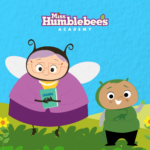Determining how your child learns will help you to become a more effective aid during the formative stages of his or her academic training. Unfortunately, most kindergarten prep often occurs outside of the home. This means that parents commonly gauge their children’s progress and abilities based on teacher feedback and on the quality of the completed work that comes home.
One of the most important things for you to determine is how your child learns. Determining a child’s learning style can sometimes be done by speaking with preschool teachers, especially in learning environments in which there is ample opportunity for instructors to spend quality one-on-one time with each child. Many teachers, however, do not assess kids according to their individual learning styles.
In fact, there is the common misconception among both parents and early learning instructors that kids all learn in the same way. When children have a hard time following along with the accepted method of teaching, the assumption is sometimes made that a learning disability exists. In reality, however, kids process and retain information quite differently from one another.
There are actually four basic learning styles that kids can have. One of these styles will make it easier for your child to process, comprehend and retain information better than will the other three. Among these four styles are kinesthetic, visual, auditory and tactile learners.
Kinesthetic learners tend to love action and are very interested in information that is presented in an active and high-energy way. They are also very hands-on and comprehend new ideas better when they have a chance to do something, rather than merely hear about it. They have a tendency to multi-task and will often comprehend new ideas best if learning these while moving around.
Tactile learners are commonly confused with kinesthetic learners because they are also very hands on. The major difference is that these kids enjoy exploring things with their senses. They pick up more when they can touch things and tend to like blocks, models and puzzles. Conversely, visual learners need to see examples of the information they are being presented with. They want graphics and other visual stimuli as this helps things to make more more sense.
Auditory learners tend to do best in traditional learning environments, simply because they are more responsive to lectures and out loud readings of new subjects. This is the learning style that is most catered to, given that teaching auditory learners in their preferred method makes it possible for teachers to address large groups at once. All other learning styles often require at-home or extracurricular reinforcement of new subjects while allowing these children to engage in behaviors that are best suited to their cognitive needs.
Identifying your child’s learning style can be essential, especially if your youngster is struggling with specific ideas before or just after having entered into kindergarten. You can supplement in-class learning with at-home activities that are designed to complement his or her preferred way of confronting new subjects. With time, your child will become able to convert new lessons into forms that are easier to digest and comprehend according to the individual learning style.










